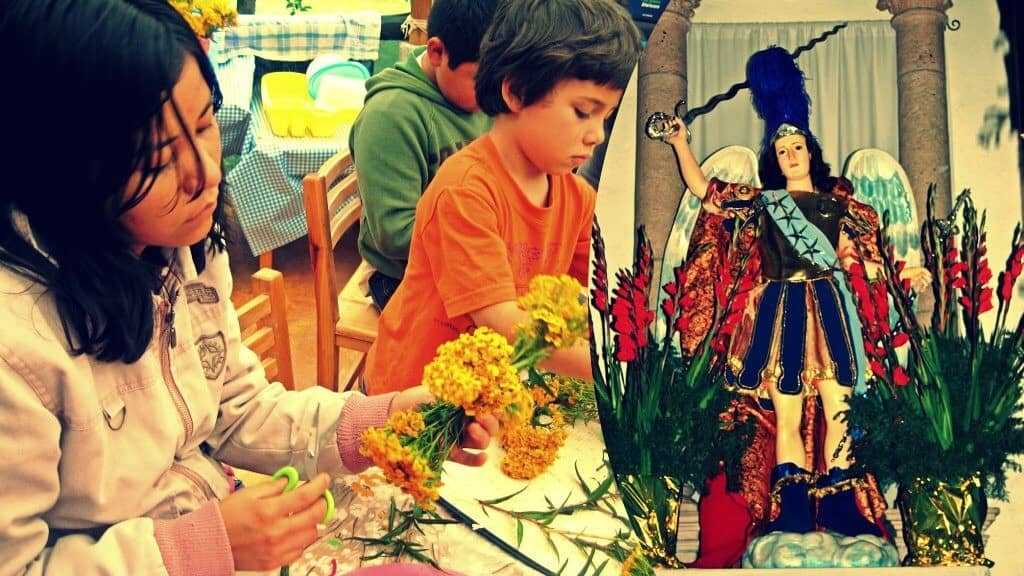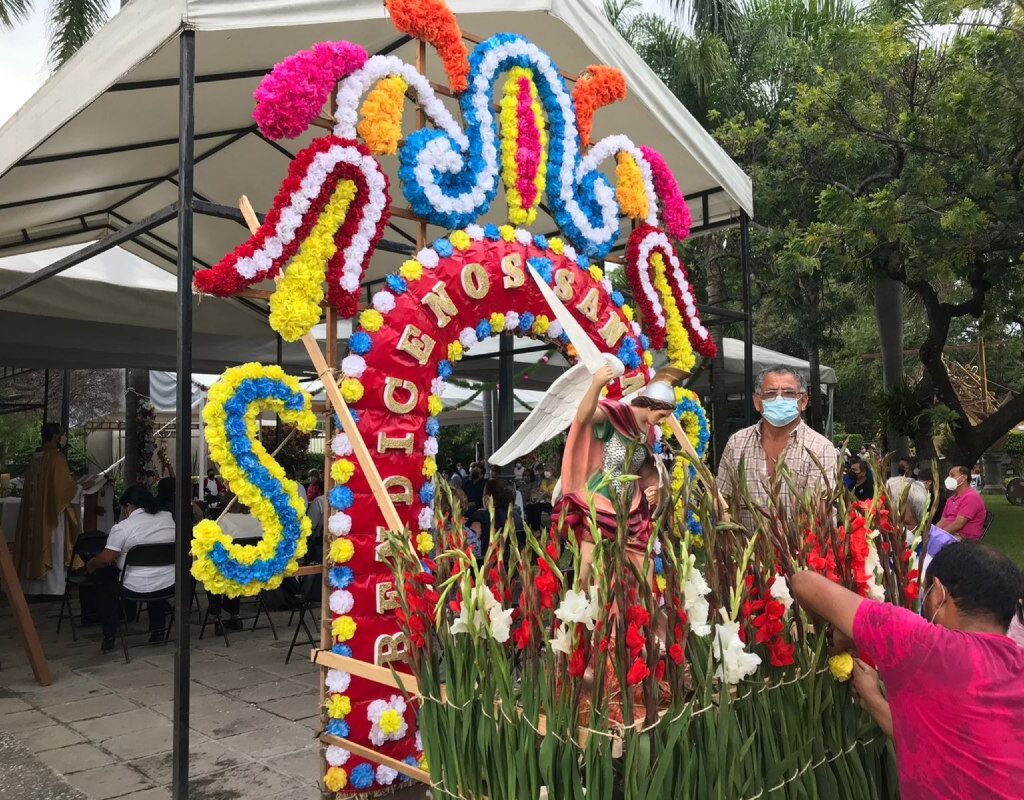Archangel Michael, known in Hebrew as Mija-El (“Who is like God?”), in Arabic as Mījā’īl, and Greek and Latin as Mijaíl and Michael respectively, stands as the leader of God’s Armies in Jewish, Islamic, and Christian religions, encompassing the Catholic, Orthodox, Coptic, and Anglican Churches.
The Figure of Archangel Michael in Mexico
In art, Archangel Michael is typically depicted as an angel dressed in Roman general’s armor, often threatening a demon or dragon with a spear or sword. Likewise, it’s common to see him in iconography weighing souls on a scale, since, according to tradition, he would play a crucial role in the Final Judgment.
Today, Archangel Michael is celebrated, and since 1977, following the Second Vatican Council, the Archangels Raphael and Gabriel are also honored. These three form the essence of the divine army in charge of the custody and defense of the heavens.
These three Archangels are the subject of deep devotion, being the only ones named and with specific attributions in the Bible.
Franciscan Devotion
The Franciscans have developed a profound worship of Archangel Michael, whom they consider a guide of souls to paradise. For Saint Francis, this figure was so significant that he established a Lent in his honor.
In the Valley of Mexico, the native peoples showed a deep religiosity, centered on the “lords of sustenance,” namely agriculture, hunting, and fishing, maintaining a close and harmonious relationship with their environment.
The four essential elements for life – sky, earth, air, and water – are reflected in Nahua traditions, which include offerings.
In contemporary peasant cosmology, Archangel Michael is not only the leader of the celestial armies but is also venerated as the worker of time, nahual-lightning, responsible for directing the angels who bring rains for sowing and control floods.
These last attributes of Archangel Michael are linked to the pre-Hispanic deity Tláloc. Thus, Archangel Michael has become the successor of Tláloc, to whom yauhtli or pericón flowers were offered at the beginning of the planting season to protect crops and ensure a good harvest, preventing hunger in families.
Morelos Traditions in Honor of Archangel Michael

In Morelos, the fusion of Mesoamerican and Hispanic traditions creates a unique syncretism. Therefore, on this day, it is common to see crosses of yauhtli or pericón, a plant with a yellow hue, adorning cornfields, homes, businesses, transportation, and streets.
The population relies on Archangel Michael, along with these crosses, to protect against the “bad airs” that could damage crops, homes, and even people.
These Pericón crosses symbolize a shield against the Devil.
Tradition dictates placing yauhtli crosses on doors and windows on September 29th.
It is believed that these crosses assist Archangel Michael in his fight against the demon and in houses where these crosses are not placed, the Devil can enter and cause misfortunes. Conversely, if encountered with these crosses, he is forcefully repelled by this divine symbol.
The Devil’s Presence Extends Beyond Homes
It’s also believed that the Devil can infiltrate factories, recreational sites, buses, cars, and any place where people are present.
In the neighborhood of San Miguel in Tepoztlán, Morelos, preparations begin earlier, on September 27th, with the ringing of chapel bells and band music at the kiosk.
September 28th is a day for outdoor socializing, where corn on the cob is grilled and pericón flowers are collected. Blessed crosses are placed in fields, homes, businesses, etc. Visits are also made to nearby towns in search of pericón flowers. The chapel is adorned with these same flowers.
On this day, the pericón branches are blessed and the band plays again. September 29th is the grand celebration of Saint Michael.
Once placed, the crosses remain in their place throughout the year. Even as they wither and dry, their symbolic, religious, and protective value remains valid every day.
This article honors the memory of Master Jorge Rosano, who in his home in Tepoztlán told me about this tradition, which I now share with all of you.





